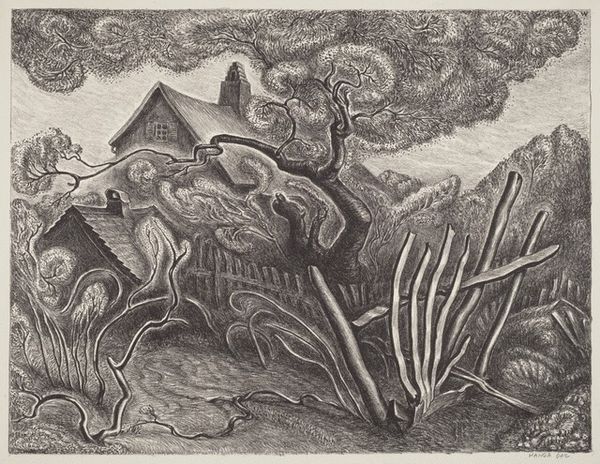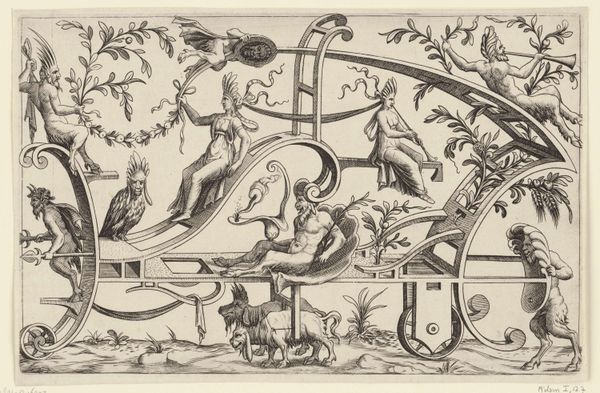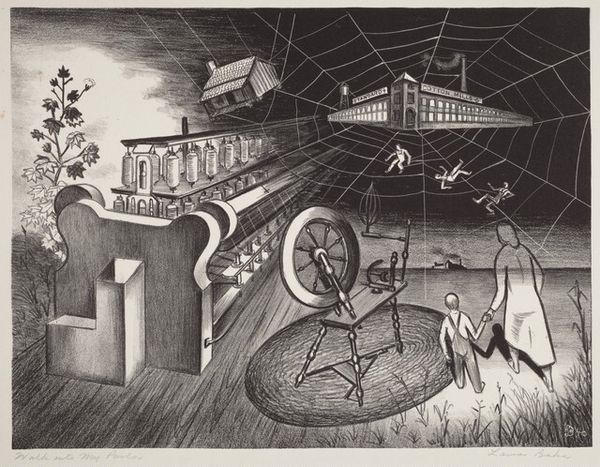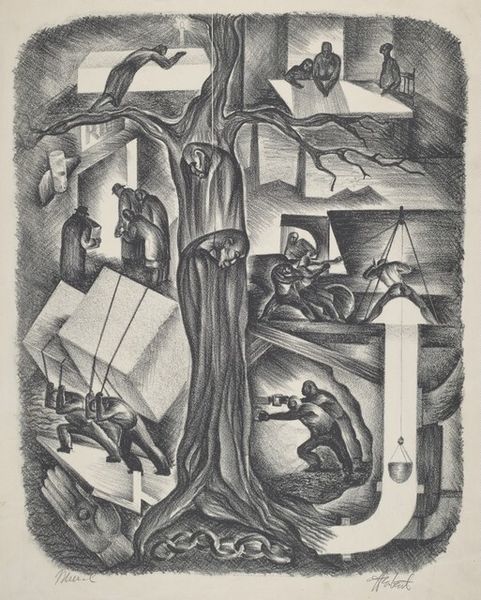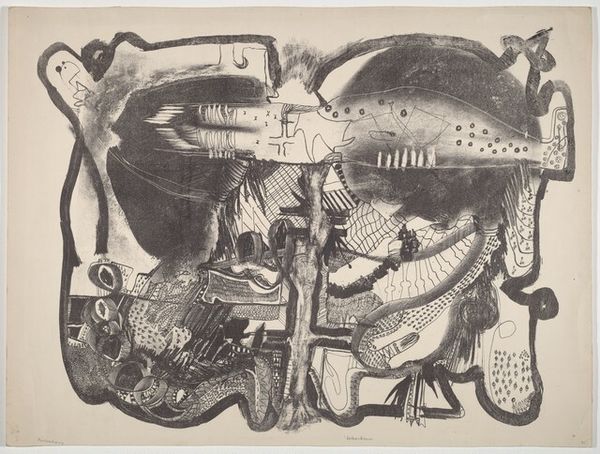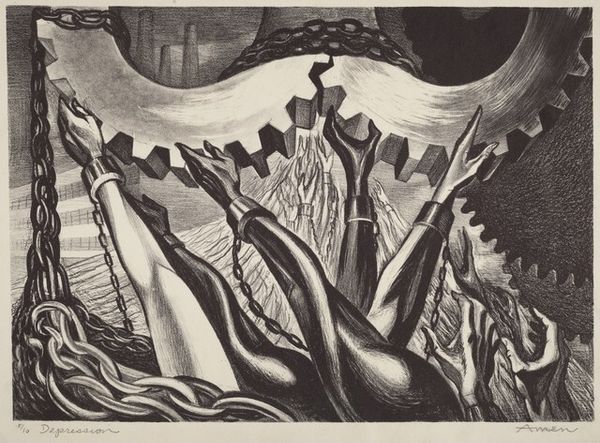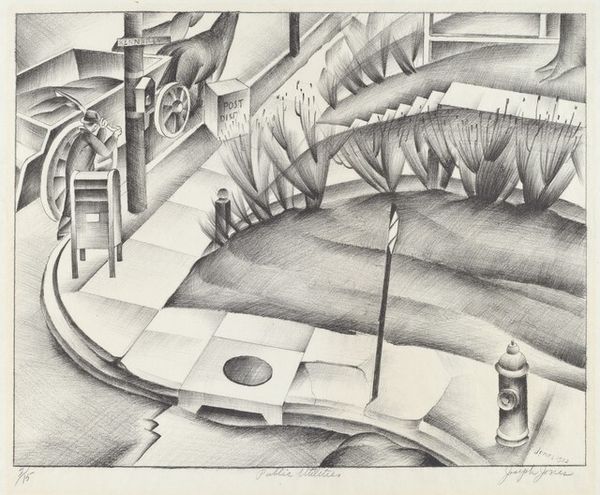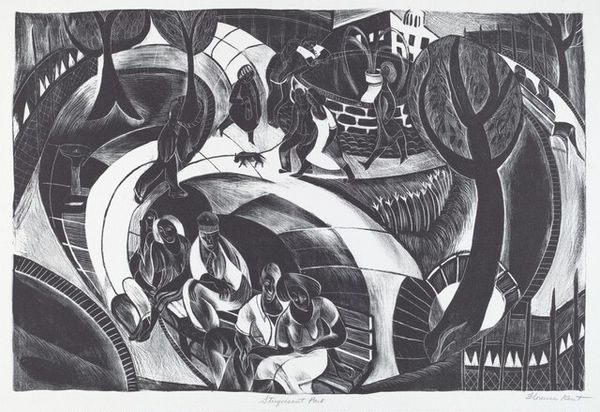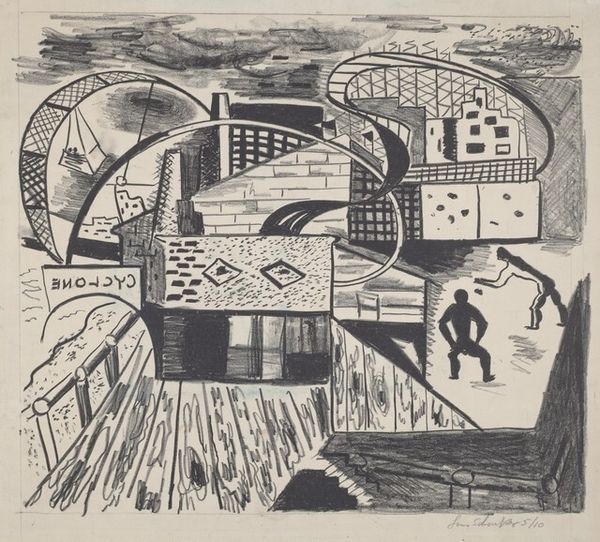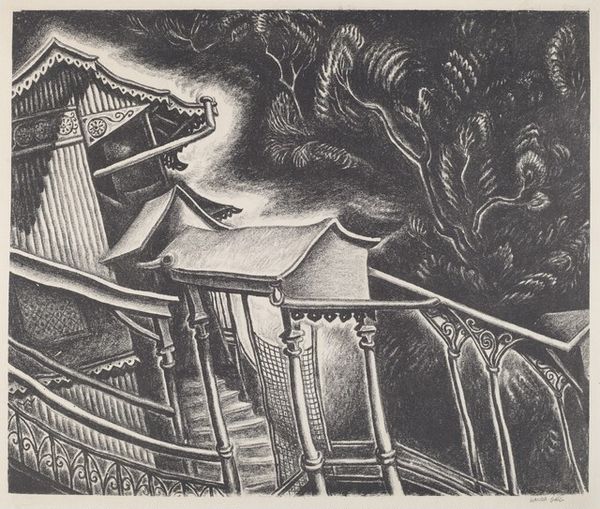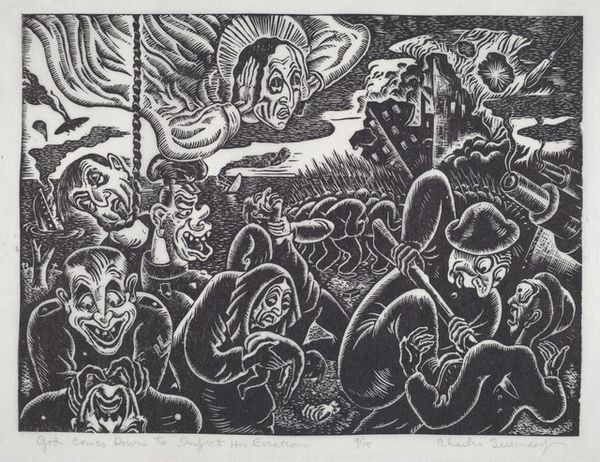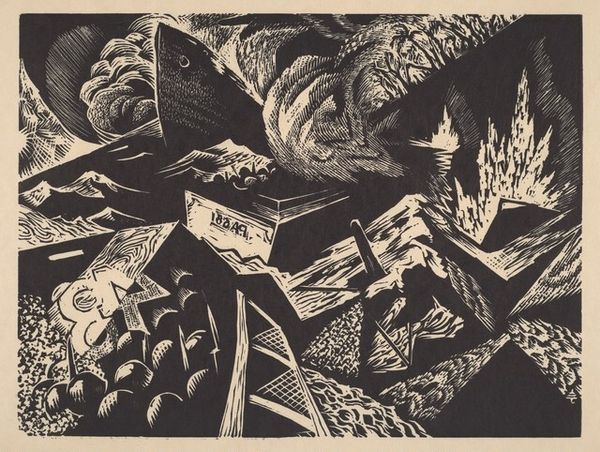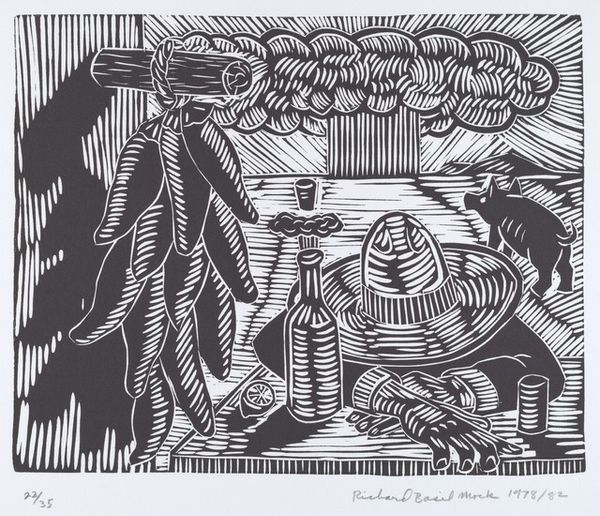
drawing, print
#
drawing
#
narrative-art
# print
#
landscape
#
figuration
#
social-realism
#
surrealism
#
cityscape
#
surrealism
#
modernism
Dimensions: image: 313 x 461 mm paper: 407 x 584 mm
Copyright: National Gallery of Art: CC0 1.0
Curator: The frenetic energy here is almost palpable. Such anxiety conveyed by shades of grey! Editor: This print is titled "Machine Age," and dates circa 1939. The artist is Jean Artman. There’s a remarkable dreamlike quality to its urban landscape. Curator: A dream, yes, perhaps a nightmare. There is something ominous, something dystopic about this particular "age," with faceless figures seemingly suspended above scenes of devastation. And look—falling people, falling houses, even livestock drifting downwards from the sky. A symbolic fall? Editor: Absolutely. The artist creates an intentional sense of unease through the disjointed composition. The architecture, angular and rigid, clashes starkly with the more organic forms, trees, bodies… Look at the repeating geometric shapes—squares and rectangles that give rhythm, but one which, in concert with these vertiginous lines and sharp angles, traps and constricts the inhabitants of the scene. Curator: In the context of the time period, and with a title like that, are we meant to see the individual crushed under the weight of technological advance? It’s reminiscent of anxieties portrayed throughout the first half of the 20th century— a world rapidly transforming with the mechanization of everyday life, creating as much misery as progress. I cannot help seeing, in the figures below and their disturbing masks, harbingers of war and of a mechanized brutality to come. Editor: Or already here! And what about the man imprisoned behind bars made of gridded lines, holding cards? Is the human reduced to being at once captive and a player? This interplay creates layers, adding semantic weight. It moves beyond a simple political commentary and into the realm of more psychologically resonant archetypes. Curator: Precisely. It asks us to think about those aspects of ourselves we want to transcend: the faceless obedience, the desire to hide from our fear… It feels relevant even today. Editor: Agreed. The artist wields the tools of formal composition to express something truly universal about being human.
Comments
No comments
Be the first to comment and join the conversation on the ultimate creative platform.
